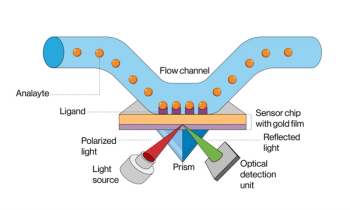
Wearable Near-Infrared Technology Tested for Monitoring Athletic Performance
Researchers from the University of Saarland in Germany investigated the reliability and side differences in muscle oxygen saturation (SmO2) measurements using a wearable near-infrared monitor on trained cyclists. The study found that the device shows good reliability but highlighted significant side differences, which must be considered in practical applications.
As endurance training advances, the use of wearable technology for precise training monitoring has become increasingly prevalent. One such technology is near-infrared spectroscopy (NIRS), which measures muscle oxygenation (SmO2) in real time. A recent study by Philip Skotzke, Sascha Schwindling, and Tim Meyer from the Institute of Sport and Preventive Medicine at the University of Saarland in Germany, published in the European Journal of Applied Physiology, delves into the reliability and side differences of SmO2 measurements using a commercially available Moxy muscle oximeter during cycling (1).
For monitoring muscle oxygen saturation (SmO2), near-infrared (NIR) spectroscopy typically utilizes wavelengths in the range of 650 to 950 nanometers (nm), with 760 nm and 850 nm being the most commonly used. These specific wavelengths are chosen because they provide an optimal balance of tissue penetration and differential absorption characteristics necessary for accurately measuring the oxygenation status of hemoglobin in muscle tissues (SmO2). The 760 nm wavelength is particularly sensitive to deoxygenated hemoglobin (HHb), while the 850 nm wavelength is sensitive to oxygenated hemoglobin (HbO2). Sometimes, additional wavelengths like 660 nm are also used to enhance measurement accuracy. This combination of wavelengths allows NIR devices to effectively calculate and monitor real-time muscle oxygen saturation levels (1-2).
The study aimed to determine the absolute and relative test-retest reliability of the near-infrared monitor and to investigate any differences between thee same muscle groups on the left and righthand sides of the body during exercise. The SmO2 values were compared between the vastus lateralis muscles of both legs in cyclists. Twelve trained cyclists and triathletes participated in three incremental step tests, with each step lasting five minutes and starting at a power output of 1.0 W/kg, increasing by 0.5 W/kg until exhaustion. The tests were conducted 2–7 days apart (1).
Athletes can adjust the intensity of their workouts based on real-time SmO2 data about their muscle oxygen levels, ensuring they train at optimal levels without overexerting. SmO2 data can also indicate how effectively an athlete's muscles are utilizing oxygen during prolonged activities, which is essential for endurance sports like cycling, running, and swimming. Furthermore, SmO2 data can reveal how efficiently muscles are working during different movements and exercises, allowing athletes and coaches to refine techniques for better performance (1–2).
SmO2 was averaged over the last minute of each stage, and the intra-class coefficient (ICC), standard error of measurement (SEM), and minimal detectable change (MDC) were calculated for all power outputs. Additionally, a three-factor ANOVA was used to compare SmO2 in the dominant and non-dominant legs (3).
Read More:
The study found no significant systematic differences between trials and sides. The intra-class coefficient (ICC) for both legs and all intensities ranged from 0.79 to 0.92, indicating good to excellent reliability. The SEM ranged from 5 to 9% SmO2, and the MDC from 14 to 18% SmO2 (1).
The analysis of variance (ANOVA) showed no significant systematic differences between the dominant and non-dominant legs. However, the bias and limits of agreement (LoA) between both legs were −2.0% ± 19.9% SmO2, indicating notable side differences in muscle oxygenation during exercise (1,3).
The findings suggest that while the Moxy Monitor is reliable for measuring SmO2, practitioners should be cautious when interpreting side differences. The wide LoA indicate that differences between the dominant and non-dominant legs are significant and may not be solely due to leg dominance. Therefore, for consistency, it is recommended to use the same device on the same leg and muscle during repeated measurements (1).
The study demonstrates that the Moxy muscle oximeter provides reliable SmO2 measurements during incremental cycling tests. However, the presence of significant side differences implies that careful consideration is needed when comparing measurements between legs. This research underscores the importance of standardizing measurement protocols to ensure accurate and meaningful data in endurance training and performance monitoring.
References
(1) Skotzke, P.; Schwindling, S.; Meyer, T. Side differences and reproducibility of the Moxy muscle oximeter during cycling in trained men. Eur. J. Appl. Physiol. 2024, May 29.
(2) Barstow, T. J. Understanding Near Infrared Spectroscopy and Its Application to Skeletal Muscle Research. J. Appl. Physiol. 2019, 126 (5), 1360–1376.
(3) Atkinson, G.; Nevill, A. M. Statistical Methods for Assessing Measurement Error (Reliability) in Variables Relevant to Sports Medicine. Sports Med. 1998, 26 (4), 217–238.
Newsletter
Get essential updates on the latest spectroscopy technologies, regulatory standards, and best practices—subscribe today to Spectroscopy.





